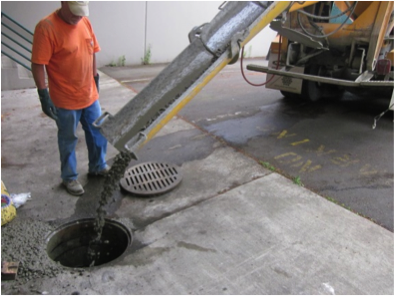Portland Stormwater Services
Alpha Environmental offers a number of different remedies to everyday stormwater issues in Portland. Some of the services offered include the following:
Maintenance
Just like a car requires regular check-ups to ensure proper functionality, the same can be said about stormwater systems. Often times, improper maintenance and upkeep of various inlets, septic systems, dry wells, bioswales, and catch basins may lead to clogging and overflow. Some common problems with stormwater systems include the following:
- Debris buildup
- Chemical build-up
- Oil contamination
- Sewage contamination
- Organic and Inorganic chemical build-up
Inspection And Testing
- Stormwater sampling
- Regulatory compliance
- Stormwater Pollution Prevention Plans (SWPPP)
- Drywell permitting and decommissioning
What Is Stormwater?
On a heavy precipitation day, most people can often expect flooded streets, parking lots, and other urban areas. In the event of hail, snow, or rain, the precipitation that flows into our storm drains is fittingly known as Stormwater.
In natural landscapes with no development, stormwater is usually absorbed into the soil or forms bodies of water. This provides needed water to animals and plants as well as replenishes reserves of ground and surface water.
In urban and residential areas, stormwater falls onto hard, nonabsorbent surfaces such as roads, sidewalks, rooftops, or parking lots. Much of the water collected in these areas are swept across said surfaces, generating run-off water.
Stormwater Systems
To mitigate overflow, residential and municipal stormwater collection and conveyance systems have been set to drain the run-off stormwater. Here are a few of those systems:
- Dry Wells
- Catch Basins
- Street Inlets
- Storm Drains
- Stormwater Basins
- Bioswales
- Pervious Pavement
Pollutants
Stormwater passes through a wide variety of natural and artificial environments. In doing so, it often sweeps through organic and inorganic constituents along its watercourse through storm drains and conveyance systems. This, in turn, provides a transport for a number of pollutants and debris.
Knowing what pollutants are being carried into natural waterways is a crucial first step towards maintenance, monitoring and remediation. Here at Alpha Environmental, we undergo due process inspection and testing protocols to pinpoint the source and its contribution to the overall pollutant load. This is to ensure the proper course of action.
The constituents of concern for stormwater, especially in Portland, include inorganic and organic chemicals such as metals, compounds, bacteria, and miscellaneous suspended solids and debris. Most municipalities and residential areas use sewer systems and street inlets to flush the flooding stormwater into greater bodies of water such as the ocean, rivers, streams or lakes. Despite this, investments in urban infrastructure have created new ecologically and environmentally-friendly ways to combat contaminated run-off water channels.
Stormwater Pretreatment
Clean Water Act & Green Solutions
To remedy the surface water/stormwater pollution, the federal government created a bill known as the Clean Water Act, which places regulations on the discharge of contaminants and pollutants that are run-off into rivers, streams, lakes, and oceans; it is regulated and enforced at a federal level by the Environmental Protection Agency (EPA) and by State programs, in Oregon, the Department of Environmental Quality (DEQ) has implemented the Water Quality Program to meet these requirements; local municipalities may have additional regulations. To meet the regulations, pretreatment systems such as bioretention, filtered dry wells and others steadily became a part of urban life. These green solutions are known as Best Management Practices (BMPs) and Low-Impact Developments (LIDs).
Bioretention
To combat stormwater pollution and overflow run-off, bio-retentive systems known as bioswales were invented to recycle and filter run-off water. Simply put, most bioswales are constructed linear channels that guide, filter and recycle runoff stormwater. Its uses include recharging groundwater and filtering debris that often finds its way into urban storm inlets. Most bioswales serve a dual purpose as it restores natural water cycles and contributes to overall urban aesthetics. Like regular inlets and drains, bio-retention systems require regular maintenance and annual check-ups.

